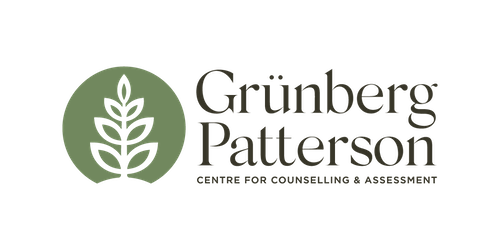Is it addiction, vice, or hobby?
Addiction, Vice, or Hobby?
This ariticle first appeared in the Island Word in spring, 2009.
Serena has been spending a lot of time on her Farmville page lately. There is something satisfying, and escapist, about pink sheep, green cows (they give “milktonium”) and banana trees in the snow. At the same time, we are both over-extended with work and kids, underexposed to sunshine, and wearing thin over this rainy winter. There seems to be little time to reconnect, get some exercise, and make healthy food. Ergo, there really isn’t much time for Farmville. Shouldn’t she be doing something more constructive? Is this a healthy respite from the pressures of work and family, or is it, as most Farmville “residents” joke, an addiction? That depends…
An addiction is something that we feel strongly compelled to do, even if it is bad for us and causes us significant losses and/or pain. We do it change our inner state from agitation and despair to peace. But it doesn’t belong to us, the way a skill or a spiritual path does; it is outside of ourselves and comes at some cost to our long-term health or survival. It stops feeling like something that we choose to do, and begins to feel like something larger than our own free will that pulls us in, again and again, to repeat a cycle of suffering, longing, obtaining, and relief that doesn’t last.
Once in a while, research comes together that adds a significant piece to our understanding of addiction. In his book, “In the Realm of the Hungry Ghosts” Gabor Mate draws connections between genetics, child development, love, and brain chemistry that come close to resolving the old battles between medical and moral models of addiction. The piece is called “self-regulation”, and it is the ability to calm one’s own intense, negative emotional states.
The road between anguish and comfort consists of a chain of brain cells that runs from just behind the forehead, where decisions are made and impulses can be suppressed, to the midbrain, where all that our senses gather encounters the seat of physiological arousal (high alert, sleep, and all states in-between) and the master controls of the hormone system. The midbrain sits between the cerebral cortex, the “modern brain” with its impressive ability to remember and to “think”, and the brain stem, the “ancient brain” that keeps us breathing, circulating blood, digesting and eliminating exactly like we did back when we were fish and reptiles. The midbrain is the seat of passions. recalled from our Biological Psychology classes as the “4 F’s”: feeding, fighting, fleeing and fornicating. Being ruled from the midbrain is fine when we are infants, and have parents to hold us and keep us from doing too much damage. But when we grow up, we need the frontal lobes to override our midbrain impulses; else we would regularly embarrass ourselves, to say the least. The frontal lobes also calm and modify the raw emotions of the midbrain—rage, despair, hunger, longing, and even ecstacy, allowing us to tolerate the each other’s company and to share empathically with one another’s trials and joys.
But the pathway from the frontal lobes to the midbrain is only roughed-in by the genetic blueprint that we are born with. Our brains come equipped with many more cells than we will ever use, but very few connections between those cells. For the connecting pathways, we await experience.
The pathways from distress to comfort are built as our parents hold, feed, sing, rock, and talk us, again and again, from states of raging need to peaceful satisfaction. Eventually, we “walk” the paths on our own, having learned the way in our parents’ arms. The more we go through these steps, the deeper and wider the way becomes; like a path in the forest, it can be followed by habit and through the dark. Self-comfort becomes automatic. In brain development, this happens gradually between babyhood and the mid-twenties, with upheavals during the teen years that can best be described as a “remodeling” period (that explains a great deal, but it’s better left for another column).
If the frontal lobe functions are strong, the limbic system passions are no more than moderate in strength, and the pathway between chaos and calm is well formed, then all is well. Like a horse with an expert rider, our emotions inform, energize and color our life, but the purposeful human “self” of the cerebral cortex is in charge. Such a person does not need an addiction to reach the place of inner peace; they can get there on their own. Alcohol, drugs, and compelling behaviors like gambling, sex, and online games may have entertainment and experimental value, but the risk of addiction is low.
A mismatch between the passionate “horse” and purposeful “rider” can occur in more than one way. Some are born with a temperament inclined to intense emotions. Passionate and sensitive, these people often make wonderful teachers, communicators, and artists. But they need to spend a lifetime developing strong “horsemanship”. Others have a more moderate temperament, but early experiences of trauma overwhelm the system before a proper path can be built; chaos without comfort becomes a normal experience and the child does not know what it feels like to have control over emotions and impulses. Most unfortunate, but very common, is a combination of intense temperament and poor early experience. Imagine a parent who is ruled by the intensity of mid-brain emotions, raising a child who is has powerful, negative, and difficult-to-sooth emotions of her own. The parent is too preoccupied with her or his own pain to help the child build a path for inner comfort.
Once we are grown, if the passions are in charge, and inclined to run away with the rider, then the pain of poor emotional regulation is overwhelming. We have outgrown the big adults who could rock and sooth us. But if an overwhelmed “rider” discovers substances or behaviors that can lift them from despair to peace, instantly, it feels good; very good. The hard work and anguish of bushwacking that pathway through the wilderness feels over; one can relax into the arms of this like a child who has found its lost mother. An addiction has begun.
There is, of course, more to the story. Genetics influence how we metabolize certain psychoactive substances (eg alcohol) and experience high-adrenalin states and risk-taking activities. In addition, some people “self medicate” chronic conditions of biochemical imbalance. Vulnerability to addiction is complex. But the ability to get from despair to inner peace is a newly understood part of it, and this may revolutionize how we work with addictions.
Addictions, it is said, erode character, maturity, and courage. Because addiction by-pass the natural routes of comfort and impulse control, they allow whatever pathway from the frontal lobes to the midbrain that did exist to atrophy. It’s as if weeds grow up into a disused path, and clearing it again (or for the first time) requires wholistic rehabilitation.
In some cases, we need to first alleviating the causes of pain before we can expect the person to develop, on their own, the means to comfort themselves. For example, living in a tent in wintertime is not a good situation for rehabilitation. In other cases, it is the self-comfort system that needs support, either temporarily, or permanently through some kind of addiction-substitute that does not carry the cost of self-destruction. Because the process of learning to live ethically, productively and at peace with our strongest inner passions is life-long, the addict who said, “recovery is never over” was right.
Finally, another word for achieving inner peace is spirituality. Appealing to that which is Sacred, by any name, seems be essential to healing from addiction. Twelve-step programs begin with admitting our powerlessness, and turning to spirituality for help. Harm reduction programs build upon empowerment of the person rather than the help of “higher powers”, but strongly affirm an ethical and meaningful approach to life. Whether it is a walk in nature, prayer, meditation, kayaking, running, or going eye-to-eye with someone we love, each of us must find ways to remember the steps to inner peace when the weeds of daily hardships appear to have covered the path. Counselling is the art, and the privilege, of assisting people to find and to walk that path, again or for the first time.


